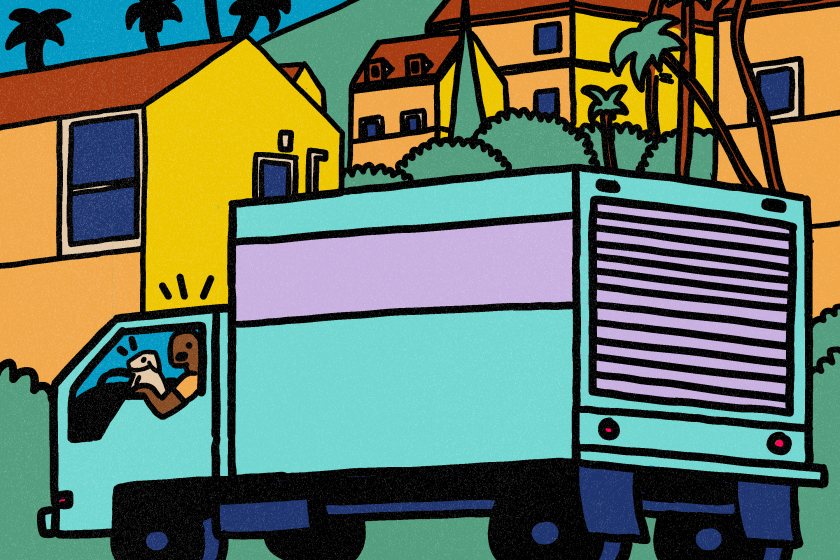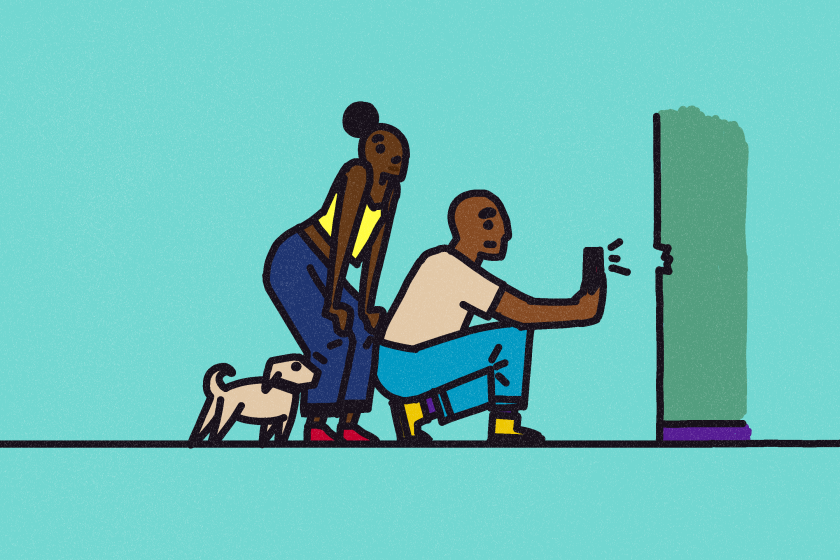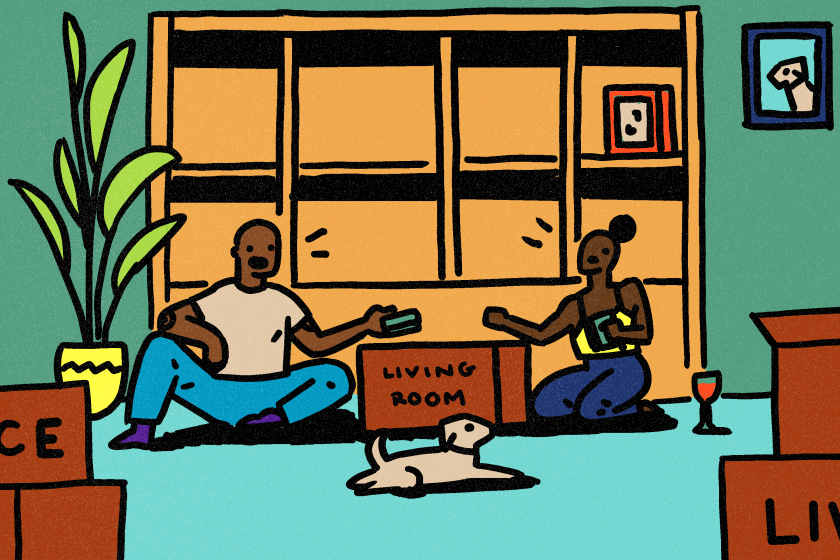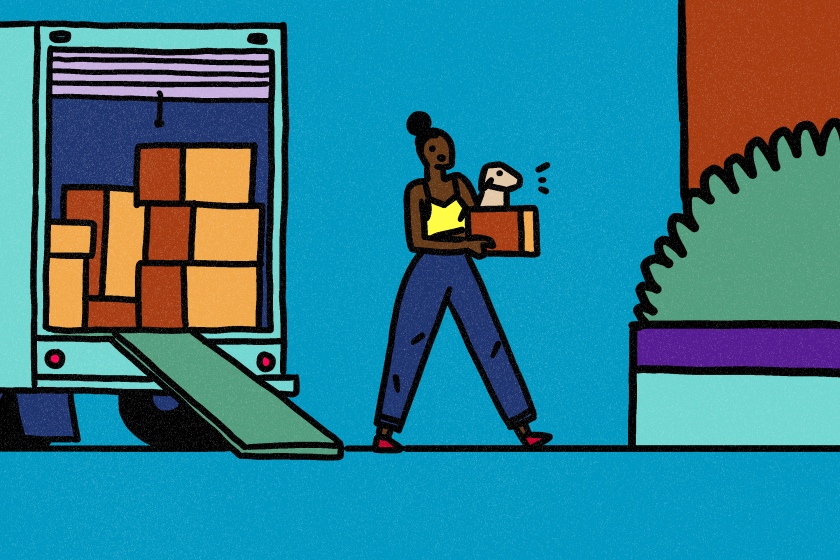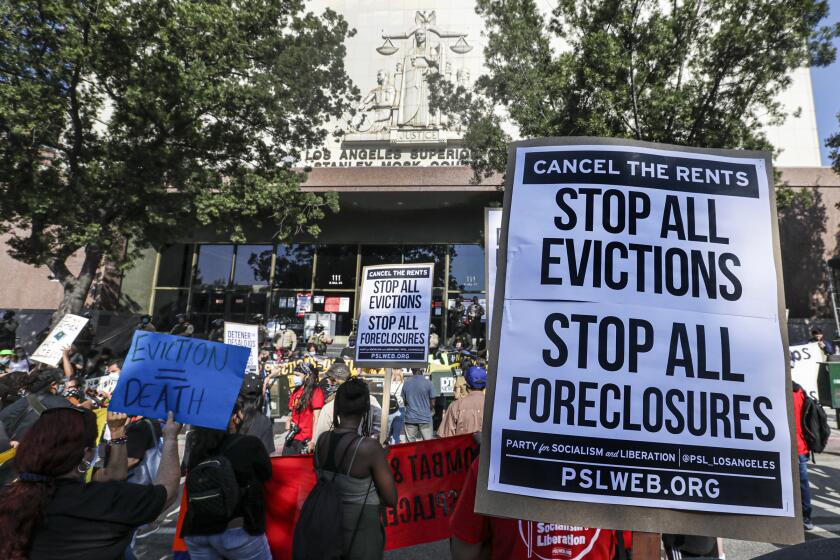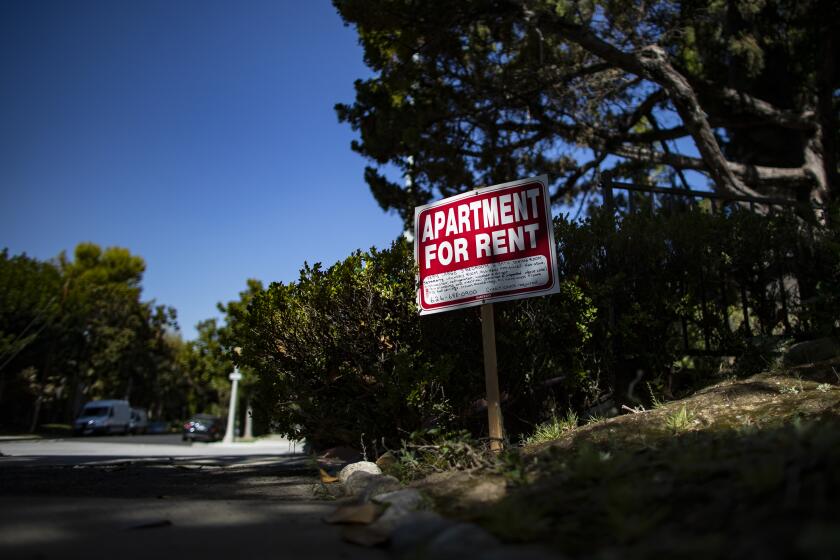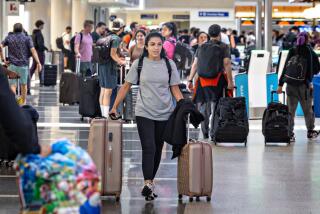How to move as safely as possible during the COVID-19 pandemic
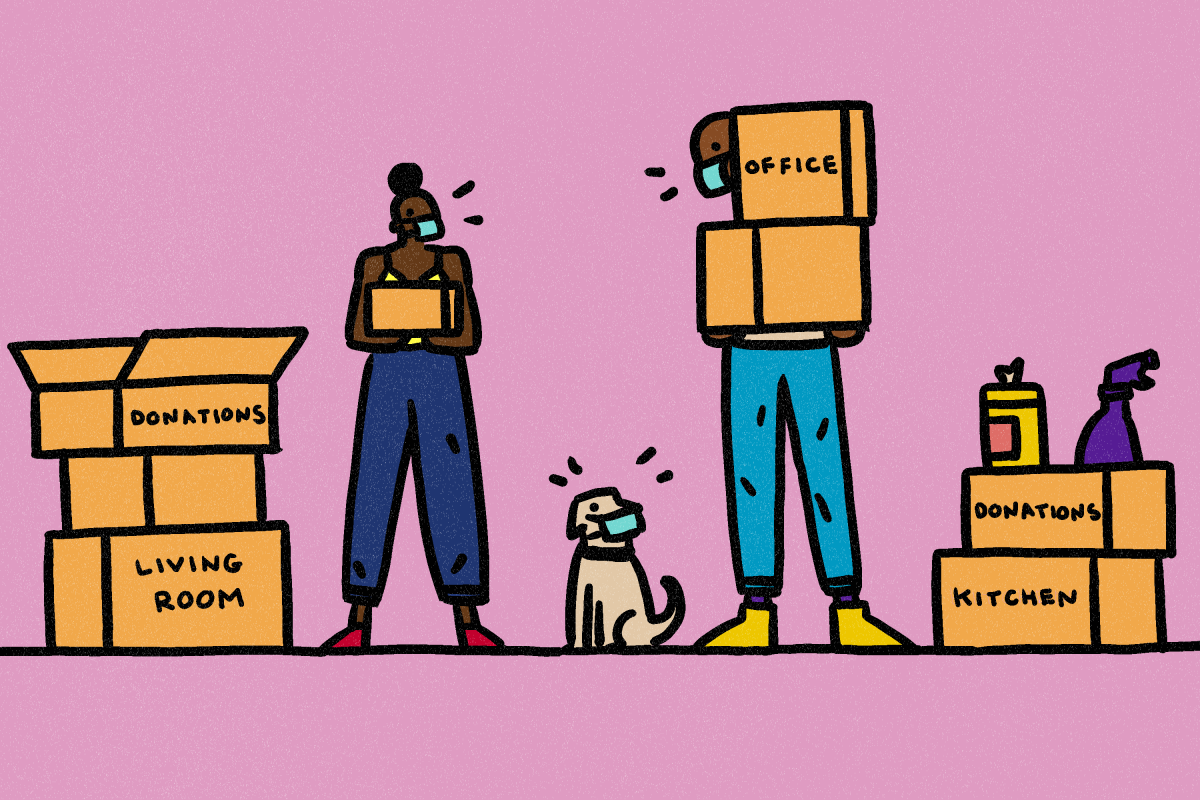
- Share via
When COVID-19 first hit, plans were inevitably put on hold. We were told it was safest to stay still, stay home. But months later, we’ve had to figure out how to move forward — safely. For some, that means physically moving.
Maybe you’re chasing new dreams, making new commitments, or purchasing a new place while interest rates are low. Maybe your lease is up. Maybe living with your parents won’t be as bad as you thought. Maybe you don’t have a choice.
Whatever the reason, the good news is that relocating can be done relatively safely during the pandemic.
Here are some recommendations from local moving professionals.
Start planning early
Even before the pandemic, it could take weeks to plan a move. But disruptions caused by COVID-19 have made certain aspects of moving unpredictable.
Supplies might not be in stock. Storage facilities may have limited business hours. If you’d like to hire a specific moving company or coordinator, they may be booked. If you’re moving out of state or out of the country, double check the cancellation or rescheduling policies of airlines or hotels before booking.
Here are some travel safety tips from the experts for flying during the coronavirus pandemic.
If you’re in an area with higher levels of coronavirus transmission, planning ahead allows you to make purchases online without having to worry about whether you’ll get what you need on time. It also helps limit the number of trips to the store you need to take.
Donations have also been harder to navigate during the pandemic, according to Liz Gersh, a professional organizer who specializes in moving services and estate clearing.
A large part of moving efficiently involves getting rid of stuff you don’t need before the move. Though many donation centers, consignment centers and auction houses have reopened, they have only so much storage space and can be pickier about what they take, she said.
“Put it on Nextdoor or Craigslist or give it away for free,” she said. “Or if you know someone who needs it, find it a new home so it doesn’t end up in a landfill.”
If you’re planning a DIY move
Social distancing from strangers is less of an issue if you’re moving yourself, but if you’re asking family or friends outside of your household to help, make sure to adhere to the basic guidelines. Maintain six feet of distance and wear masks. Communicate your boundaries and the precautions that will make everyone safe and comfortable, so everyone is on the same page before move day.
A new app, MyCOVIDRisk, aims to help people gauge and reduce the level of coronavirus transmission risk in their activities.
If renting, talk to your current and future landlord about any safety guidelines that may affect your move.
Also, although collecting free boxes from stores and on Craigslist may have been a money-saving tip in pre-COVID times, it may be safer to buy new boxes or use ones you already have. Places like U-Haul, Home Depot and Uboxes.com offer affordable moving containers that can be delivered to your door.
Finding a rental in L.A. was hard enough before the global pandemic. Here’s a guide to how to search and move in Southern California, and stay safe.
If you’re renting a moving truck
Many moving truck companies are also limiting in-person paperwork and increasing their sanitation procedures. Some have limited business hours and reduced the number of employees working at a time, so be sure to check if an appointment is needed for pickup.
Penske has set up designated parking and pickup areas outside their locations, Enterprise offers curbside pickups, and U-Haul gives customers the options of doing the entire rental transaction by phone.
Moving often brings a lot of stress and anxiety. But local moving professionals explain how some extra planning can make your move day go smoothly.
If you’re hiring a moving company or coordinator
Many moving companies are now offering virtual estimates and the ability to do all paperwork online.
Aaron Steed of Meathead Movers recommends getting clarification about the safety procedures the company has implemented during the pandemic, including whether anyone has been sick from COVID-19 and what they’ve done about it.
It’s important that the company offers a free reschedule, so if you wake up sick, you can move the date without a penalty.
If your move date is inflexible, plan for someone who can be a representative onsite to oversee the move so no one’s health is put at risk.
Just as he empowers his “meathead movers” — named after the student athletes they hire and support as they’re working through college — to leave for their own safety if someone onsite has undisclosed symptoms, Steed also encouraged anyone who sees movers with potential COVID symptoms to ask them to leave.
Mortgage rates are at historic lows, so there’s money to be saved there by buying a home now. But when it comes to the home’s sales price, don’t expect a discount because of the economic downturn.
Moving day
Keep hand sanitizer, soap and paper towels accessible.
Make sure high-touch areas are sanitized.
Keep fans on or open windows for additional air circulation.
If you’re like most people in Southern California, you live in a rental.
Preparing your new home
Moving is a good opportunity to sanitize surfaces, as well as clean and launder everything, including rugs, pillows, sofa cushions. That way you can truly start afresh.
Studies now show that surface transmission of the coronavirus is less a risk than originally thought — the virus levels drop dramatically after a few hours.
Disinfecting and killing germs on surfaces can still lower the risk of infection. The CDC’s guide to cleaning and disinfecting recommends cleaning visibly dirty surfaces with soap and water prior to disinfection and making sure you’re using an EPA-approved disinfectant against COVID-19.
More to Read
Sign up for Essential California
The most important California stories and recommendations in your inbox every morning.
You may occasionally receive promotional content from the Los Angeles Times.
